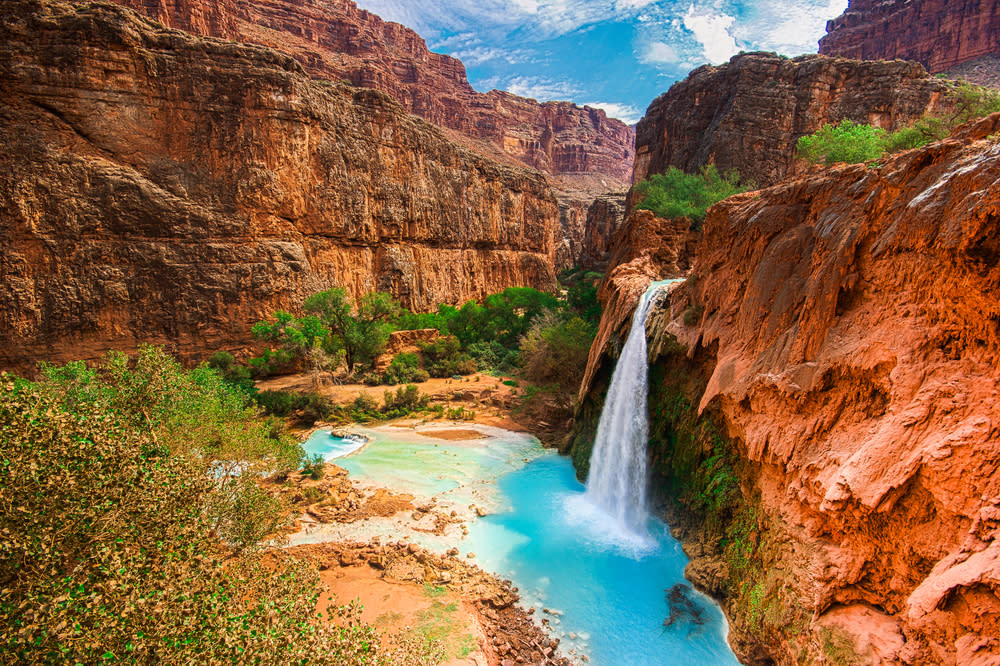More from Grand canyon
Main Menu
- 00:00
- 06:00
- 12:00
- 18:00
- 23:00
Grand canyon : Next 24-Hour Weather
Today - 26th April 2025
Sunrise 05:46
Sunset 19:18
Tomorrow - 27th April 2025
Sunrise 05:46
Sunset 19:18
Holiday Weather Now
Sorted by popularity:
Updated at 14:00 GMT
-
Temp feels like1°C35°F
-
Length of day13h 30m
-
Pressure29" (1011 hpa)
-
Visibility10 km (6miles)
-
Wind speed29 km/h
Sunrise 05:48
Sunset 19:18
-
Temp feels like:
1ºC (35 ºF)
-
Length of day:
13h 30m
-
Pressure:
29" (1011 hpa)
-
Visibility:
6 miles (10 km)
-
Wind speed:
29 km/h
Located in Arizona of the US; the Grand Canyonâs climate varies by its location. Both borders being at high elevations, the weather is generally cooler than the inner canyon, which is closer to sea level. At any positioning of the canyon the weather can alter rapidly and visitors should always be prepared for a variety of climates and conditions.
The north border of the Grand Canyon, experiences climates much colder than the south, and due to heavy snowfalls that particular part of the park is usually closed every winter. With the south border at 7,000 feet above sea level and the North at 8,000 feet, travellers commonly experience altitude sickness.
Given the Grand Canyon's South Rim has an altitude 2135m above sea level means snow in the winter and cool nights throughout the summer. The Inner Canyon; located below the southern rim has a noticeably diverse climate. With itâs location at the base alongside the Colorado River its distance from the ground is roughly a mile lower. Temperatures now along the Colorado River at the canyon bottom can reach as high as 49°C.
Located a lot higher than the South Rim, the North Rim is 2400m above sea level and can obtain snow throughout the majority of the year. Weather is principally erratic in spring and autumn so tourists to Grand Canyon should be equipped for a variety of climates.
Typical summer climates on the South edge are mildly enjoyable with climate averaging between 10ºC to 20ºC. Where as the North Rim summer temperatures are a lot colder than the temperatures in the South Rim due to amplified elevation and can linger from anywhere between 5°C and 15°C. Inner canyon temperatures are generally quite severe with daytime highs at the river; 1500m below the rim, often exceeding 40ºC. Thunderstorms commonly take place throughout July, August, and early September over the entire region.
Winter conditions on both the North and South Rim can again be rather extreme. Travellers visiting the South rim should always be prepared for snow, icy roads and trails, and possible road closures. Even though streets on the South Rim are ploughed when needed, the torrential snow still causes dangerous and unstable driving conditions. Canyon outlooks can at times be provisionally concealed by fog during passing storms; however entrance fees are yet still not refundable because of adverse weather conditions. The North Rim can also experience heavy snowfall throughout the winter months; therefore the road into the North Rim is normally closed from the first heavy snow in November or early December to mid-May.
Spring and autumn weather in the Grand Canyon is very unpredictable, hence visitors should also be prepared for sudden changes in the weather at those times of year. May and October can be some of the driest months and late April and May are the windiest, though snowstorms may still take place. Spring and autumn distribute mild temperatures with warm days and cooler nights, and can be the best times to for climbing in the canyon.

















